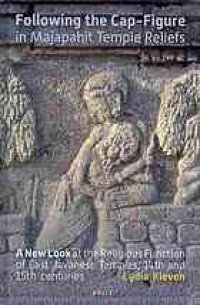
Ebook: Following the cap-figure in Majapahit temple reliefs
Author: Lydia Kieven
- Tags: Hindu symbolism -- History, Indonesia -- History -- To 1478, Java (Indonesia) -- Religion, Hindu symbolism, Religion, Indonesia, Indonesia -- Java
- Series: Verhandelingen van het Koninklijk Instituut voor Taal- Land- en Volkenkunde
- Year: 2013
- Publisher: Brill
- City: Boston
- Language: English
- pdf
Following male figures wearing a cap (cap-figures) in temple reliefs of the Javanese Majapahit period (ca. 1300-1500) leads to astonishing results on their meaning and function. The cap-figures, representing commoners, servants, warriors, noblemen, and most significantly Prince Panji, the hero from the East Javanese Panji stories, are unique to depictions of non-Indic narratives. The cap-figure constitutes a prominent example of Majapahit’s creativity in new concepts of art, literature and religion, independent from the Indian influence. More than that, the symbolic meaning of the cap-figures leads to an esoteric level: a pilgrim who followed the depictions of the cap-figures and of Panji in the temples would have been guided to the Tantric doctrine within Hindu-Buddhist religion
Download the book Following the cap-figure in Majapahit temple reliefs for free or read online
Continue reading on any device:

Last viewed books
Related books
{related-news}
Comments (0)